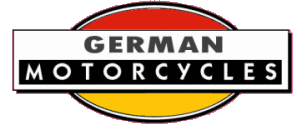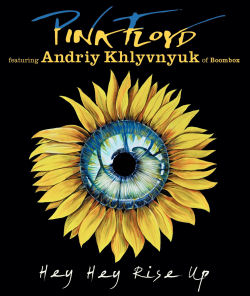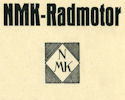


This page lists brand names beginning with the letter "N" for which we currently have only an historical precis. See also the List of German Motorcycles.
Nabob
Built 198cc two-stroke engines which were fitted to MFB and possibly Meister machines in the first half of the 1920s.
Sources: motorrad-oldtimer-photo-archiv.de, Tragatsch under MFB.
Namapo 1901-1924
Nassovia
Limited production of motorcycles powered by 2.7hp Anzani engines, built in 1925 only
Sources: Tragatsch p225
National 1930s-1940s
Necko 1954-1960
Niedersachsen
Manufactured by Johs. Tündemann Motor-Fahrzeug-Bau Hermannsburg, c.1920
Powered by a 4-stroke engine, possibly Gruhn.
Source: Source: motor-lit-berlin
Nemalette 1924-25
Nera, Neroba
Built in Kirchentellinsfurt by Raiser & Söhne from 1949 to 1950, the Nera scooter had a JLO 120cc engine whilst the similar Neroba used a 150cc Sachs.
Source: GTU Oldtimerservice
Nestoria 1923-1931
Neve
Heinrich Neve Motor- und Fahrradwerke, Neumünster, Altonaer Str. 1924-1926
The company was one of the first to fit the then-new 132cc and 170cc ILO engines to their own frames.
Source: Tragatsch p226, et al
NFW
Manufactured by Niedersächsische FahrradWerke
Late 40s early 50s moped
Source: Farben-Schiessl
NIS
Operating from 1925-1926, the firm fitted 269cc JAP two-strokes and 293cc JAP sidevalve engines into their own conventionally styled frames.
They were possibly also known as M.J.S.
Source: Tragatsch p228
NKF

Norddeutsch Kühler Fabrik, Berlin Tempelhof
Using Bekamo 132cc engines they built lightweights from 1923 to 1925.
Sources: Tragatsch p228; motormobilia.de
NMK-Radmotor

Manufactured by Navigator-Motoren-G.m.b.H., Karlsruhe i. Baden, Westendstraße
Around 1925 the Karlsruhe firm produced a two-stroke bicycle attachment engine of 42×37mm bore/stroke fitted above the front wheel. It is believed they also built Lastendreiräder (cargo tricycles).
Source: motor-hist-foto.de
Nordap 1950s
Nordstern
Beginning in 1922, Nordstern built motorcycles with 2.5hp two-stroke engines. The SFW firm purchased Nordstern when it failed in 1924.
Source: Tragatsch p229
Norwed 1924-25

Novus
Rebenring 33
38106 Braunschweig
Website: novusbike.com
In 2025 they offered a "lightweight E-Motorbike".
NUX
Manufactured 1924-1925
Built lightweights fitted with their own two-stroke deflector-piston engines. Another victim of the hyperinflation period.
Source: Tragatsch p235
NWF 1954-55
Rarer German Marques